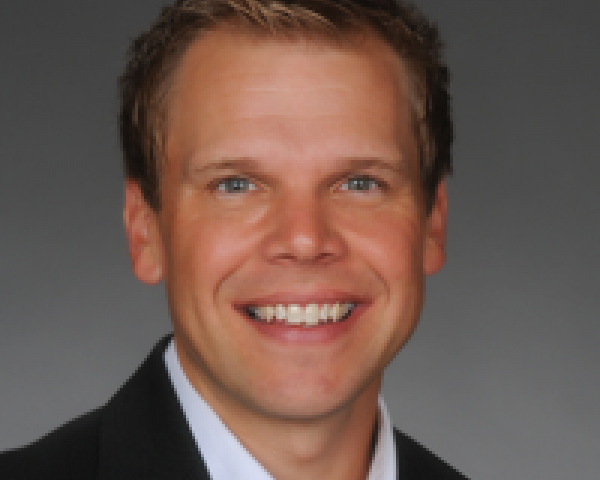Rethinking Underwriting for Commercial Lines
Exciting technologies are delivering automation directly to the underwriter's desk.

Exciting technologies are delivering automation directly to the underwriter's desk.

Get Involved
Our authors are what set Insurance Thought Leadership apart.
|
Partner with us
We’d love to talk to you about how we can improve your marketing ROI.
|

Deb Smallwood, the founder of Strategy Meets Action, is highly respected throughout the insurance industry for strategic thinking, thought-provoking research and advisory skills. Insurers and solution providers turn to Smallwood for insight and guidance on business and IT linkage, IT strategy, IT architecture and e-business.
Reason #3: Only 4% of our industry has achieved the CPCU, so earning the designation immediately puts you in the top echelon.

Get Involved
Our authors are what set Insurance Thought Leadership apart.
|
Partner with us
We’d love to talk to you about how we can improve your marketing ROI.
|

Tony Canas is a young insurance nerd, blogger and speaker. Canas has been very involved in the industry's effort to recruit and retain Millennials and has hosted his session, "Recruiting and Retaining Millennials," at both the 2014 CPCU Society Leadership Conference in Phoenix and the 2014 Annual Meeting in Anaheim.
The insurance outlook in Latin America is generally favorable but varies by country, and complex tax issues need to be considered.

Get Involved
Our authors are what set Insurance Thought Leadership apart.
|
Partner with us
We’d love to talk to you about how we can improve your marketing ROI.
|

Mike Shields is a member of EY's New York financial services office insurance tax practice, with responsibility for a variety of insurance companies in New York, Pennsylvania, Bermuda, Europe and other jurisdictions. He has 25 years of tax consulting experience, 20 of which have been spent serving insurance tax clients.
The "controversy" over whether to be vaccinated for measles is no controversy -- it derives from a completely discredited research hoax.

For many years, Americans did not need to worry about contracting the once-widespread disease called the measles. In fact, the Centers for Disease Control and Prevention (CDC) officially declared measles eliminated in the U.S. in 2000. Unfortunately, that is no longer the case. In January 2015 alone, there were already more confirmed cases in the U.S. than are typically diagnosed in a full year. Public health officials are very concerned and have moved to aggressively contain this very contagious, but 100% preventable, disease. The current outbreak and surge in confirmed cases of measles, most notably in California, has been scientifically linked by researchers from MIT and Boston's Children Hospital to the outbreak that began in Disneyland in December 2014. Medical researchers believe the spread of the current measles outbreak is solely because of low vaccination rates in certain communities based on a widespread but false link between childhood immunizations and autism. International health officials have called the link between the MMR (measles, mumps and rubella) vaccine and autism "the most damaging public health hoax in the past 100 years."
Just last week on April 21, the Journal of the American Medical Association (JAMA) released the findings of a comprehensive study using the health insurance data base of 95,000 children and found no overall link between autism and the MMR vaccine. The study also found no link for children with an autistic sibling. The study did find a lower vaccination rate for the younger siblings of children with autism based on parents' continued fears of a link. The JAMA study authors from the Lewin Group in Falls Church, Va., stated; "Consistent with studies in other populations, we observed no association between MMR vaccine and increased ASD (autism spectrum disorder) risk among privately insured children."
Despite the overwhelming medical evidence that the MMR vaccine is both very safe and highly effective, anti-vaccination groups still dispute the facts and are warning parents not to be pressured into having their children vaccinated, which is the crux of this public health problem. On the same day that the JAMA study was released, CBS Evening News ran a segment on the current U.S. Surgeon General Vice Admiral Vivek Murthy, MD, MBA, or "America's Doctor," who appeared on Sesame Street to promote childhood vaccinations. CBS closed the segment with; "Vaccination critics don't see anything cute about this video after the controversy over the recent measles outbreak." Really? There is no controversy. It was all based on a documented hoax.
The original belief that vaccinations cause autism was based on a reported study in 1988 by Dr. Andrew Wakefield in the U.K., which has since been 100% completely discredited. His report unnecessarily panicked many parents around the world, causing a sharp decline in the number of children getting the MMR vaccine. The false claims and widespread panic began when a British medical journal, the Lancet, published Wakefield's article. It was later determined that the author had multiple conflicts of interest, had manipulated evidence and had broken ethical research codes of conduct, including accepting funding by attorneys involved in lawsuits against vaccine manufacturers. The Lancet fully retracted the article, but not until 2010, when the editor-in-chief stated that the link was "totally false" and that the world-famous medical journal was "deceived." The Canadian Medical Journal in 2010 went on to state that the original research included a "callous disregard" for the "carefully selected" study group of only 12 children and that "several elements of this research were incorrect and contrary to findings of an earlier investigation." Dr. Wakefield subsequently lost his license to practice medicine in the U.K as a result of this fraudulent research.
These are the facts that parents need to know about the measles. Symptoms typically begin with a high fever, runny nose, sore throat and cough, which can easily be misdiagnosed as a simple cold or the flu. The incubation period is between seven and 18 days of exposure to the virus. It is very dangerous because people are contagious up to four days before the red rash appears and likely do not know they are infected. In addition, a room can still be contaminated as long as two hours after an infected person leaves. A single infected person can spread the disease to between 11 and 18 people. An unvaccinated person has a 90% chance of infection if exposed to the virus. The risk of serious complications and death is even greater for adults and infants than for children and teenagers. Rubella, known as the German measles, is also caused by the virus and is usually a mild form of the disease but is a very serious infection that causes miscarriages, still births or birth defects in unborn children when pregnant women get the disease.
Most people born prior to 1957 had the measles. The disease was once so prevalent that in New York City, in the first 10 weeks of 1933 alone, there were 10,000 cases and 434 deaths. The first vaccines developed began in 1958 and became widely available in 1963. Prior to 1963, there were three to four million cases of measles reported each year in the U.S., with 400 to 500 reported deaths annually.
Although many parents in the anti-vaccination movement believe the measles is not dangerous and the MMR vaccine is, the medical facts state otherwise. In fact, from 2001 to 2013, 28% of children in the U.S. with the measles had to be hospitalized. Public health officials fear that many more cases will develop from this outbreak of a very preventable disease, unless aggressive public health measures are undertaken. What is required is an extensive education campaign including widespread vaccination of the unvaccinated U.S. population, starting with infants at 12 months and a booster shot at age four to six, prior to pre-school or kindergarten. Unvaccinated adults also need to be vaccinated.
There are a number of myths associated with the measles vaccination that keep some parents from protecting their children. The controversy surrounding the anti-vaccination movement is based largely on parents' philosophical beliefs against the vaccination. Dr. James Cherry, a pediatric infectious disease expert at UCLA, believes that the recent outbreak in California is "100% connected to the anti-immunization campaign." He went on the say that there are "some pretty dumb people out there."
Medical researchers from MIT and Boston Children's Hospital documented that the rapid spread of measles from the Disneyland outbreak, beginning in mid-December 2014, indicated a significant percentage of the population exposed had low vaccination rates. These researchers determined that the exposed population rate might have been as low as 50% and likely no higher than 86%. These rates are well below the 96%-99% level known as "herd immunity," which is required to prevent future outbreaks.
The anti-vaccination movement includes those parents who believe that there is no medical risk from not vaccinating their child, that the disease is extinct, that doctors and drug companies push vaccinations for their own profit, and that you can get the measles from the vaccination. Still others believe the false and discredited link to autism. For the parents who are against vaccination, they not only put their own children at risk, they dramatically increase the risk for the general population who are unable to get the vaccination, such as infants under the age of one, and children and adults with weak immune systems, including people with cancer and other diseases.
Measles is still widespread throughout the world. Travelers from overseas continue to bring the disease into the U.S on a daily basis. The anti-vaccination conspiracy movement belief that doctors and insurance companies promote the vaccination to increase profit is absurd and is negated by the fact that health insurance companies pay for the vaccinations at no cost to the patient. Similar to the flu shot that is a dead virus from which someone cannot get the flu, it is almost impossible to get the measles from the MMR vaccine.
The CDC states there is a 1 in 3,000 chance of a mild allergic reaction to the MMR vaccine but a 90% chance of infection if an unvaccinated child is exposed to the virus. Parents should do the math. In addition, a blood product containing an immune globulin is available for people who are medically unable to immunize with the MMR vaccine for any reason.
What parents need to know is that the scientific community has found no evidence whatsoever of a link between MMR vaccine and autism or any other childhood development disorder. In addition to the just-released JAMA study, large epidemiological studies conducted by the CDC, the American Academy of Pediatrics, the Institute of Medicine at the U.S. National Academy of Sciences and the U.K. National Health Services all found no link between MMR and autism. This original false research has done significant damage to the field of public health and has done serious harm to children of parents who were misled by this report, which resulted in unnecessary deaths, severe impairment and permanent injury in unvaccinated children. Because of wide dissemination of this discredited link, there were many lawsuits by parents with children with autism, but a special court convened by the National Vaccination Injury Compensation program denied all compensation claims in U.S. federal court against manufacturers of the vaccine in 2009.
The recent measles outbreak in California is what has spiked the "controversy" over vaccinations, which has made the national news in 2015 including; CNN, the New York Times and Time Magazine. There have been 178 documented new cases of the measles by late March by the CDC, including five unvaccinated Disneyland workers in Orange County, and the outbreak is now spreading across the U.S.
Although traditional public health issues are typically rooted in poor or rural areas of the country, this current measles outbreak is concentrated in wealthy neighborhoods in California and surrounding states. Although it is reported that only 3.1% of parents in California refuse to vaccinate their children, for health or religious reasons, this number is misleading. In fact, many areas within California have double-digit exemption rates from vaccinations, with some areas as high as 50%.
The MMR vaccination is the best way to prevent disease both for the individual and the general population. It works by making the body produce anti-bodies against the virus. The measles vaccination is recommended for all people 12 months of age or older, and especially people traveling overseas. MMR vaccinations are supported by the American Academy of Family Physicians, American Academy of Pediatrics, the Centers for Disease Control and Prevention and the Mayo Clinic, to name just a few.
An extensive education campaign is required to overcome false and unfounded fears among parents of unvaccinated children. Legislation is needed to strengthen immunization laws requiring all school-age children to receive the measles vaccination, except for those with a medical exemption certified by a licensed physician. Public health officials should also track and verify both statewide and local immunization rates and should mandate that schools maintain an up-to-date list of pupils with exemptions so they can be excluded quickly if an outbreak occurs, temporarily exclude unvaccinated students and teachers from attending school and offer measles vaccinations for unvaccinated students and teachers.
The MMR vaccine is 99% effective and provides immunity for a lifetime. It was once considered one of the major public health campaign success stories. Now, health officials fear the potential for a public health crisis based on blatantly false research and unfounded fears. The CDC points out that people who refuse to vaccinate usually live in the same community. "When measles find its way into these communities, outbreaks are more likely to occur." Consumers and parents should confirm with their doctor that they or their children do not have any allergic reactions to other medications. They should also verify that they do not have an immune deficiency condition, which may cause side effects and decrease the vaccine's usefulness.
The myth that childhood vaccinations lead to autism was based largely on a completely discredited medical research hoax. This myth is still being widely perpetuated today not only by the anti-vaccination conspiracy movement led by Hollywood celebrities but also by the mainstream media.
My heart breaks for the parents of children with autism, including a close family friend. But it breaks my heart even more knowing that thousands of children are unnecessarily exposed to unimaginable consequences of birth defects and death from something so preventable. Parents need to listen to the Surgeon General, the CDC, the Mayo Clinic and the American Academy of Pediatrics and not Hollywood celebrities with zero background in public health.
I would like to thank my research assistant and co-author Ms. Chandler Berke who is a public health/science undergraduate student at the College of Charleston in South Carolina.
Get Involved
Our authors are what set Insurance Thought Leadership apart.
|
Partner with us
We’d love to talk to you about how we can improve your marketing ROI.
|

Dan Miller is president of Daniel R. Miller, MPH Consulting. He specializes in healthcare-cost containment, absence-management best practices (STD, LTD, FMLA and workers' comp), integrated disability management and workers’ compensation managed care.
Law firms traditionally spend years building relationships that lead to panel positions with carriers, but a formalized process is changing things.

Get Involved
Our authors are what set Insurance Thought Leadership apart.
|
Partner with us
We’d love to talk to you about how we can improve your marketing ROI.
|

Margaret Grisdela is a law firm marketing consultant with more than 30 years of experience serving attorneys, accountants, investment banks and businesses with high-quality information products and services designed to generate revenue. Grisdela is the author of <em>Courting Your Clients: The Essential Guide to Legal Marketing.</em>
Hospitals are buying doctors' practices as part of a wide-scale consolidation, then adding huge charges to bills. You need to defend yourself.

Get Involved
Our authors are what set Insurance Thought Leadership apart.
|
Partner with us
We’d love to talk to you about how we can improve your marketing ROI.
|

Eric Bricker, MD, a board-certified internal medicine physician, serves as the chief medical officer for Compass Professional Health Services. He co-founded Compass with Scott Schoenvogel and Cliff Sentell in 2005 to help change how healthcare is delivered to improve employee health and lower healthcare costs.
As firms struggle to manage costs for indemnity payments in workers' comp, card-based systems can make the process more efficient.

Get Involved
Our authors are what set Insurance Thought Leadership apart.
|
Partner with us
We’d love to talk to you about how we can improve your marketing ROI.
|

Dave Stair is the director of insurance payment solutions for DataPath. With nearly two decades of experience in the workers’ compensation industry in sales and consulting, Stair has an extensive track record helping workers' compensation payers manage and control claim costs.
Penetration is low in Latin America, particularly in life insurance, suggesting there is still significant growth ahead for the sector.

Get Involved
Our authors are what set Insurance Thought Leadership apart.
|
Partner with us
We’d love to talk to you about how we can improve your marketing ROI.
|

James Littlewood has more than 12 years of experience in financial services, within both consulting as well as a specialty insurer in the UK. This experience has come across a broad range of project activities in insurance, reinsurance and banking, from strategic reviews through to implementation, as well as two years of line management in industry.
Drones clearly carry huge advantages, but they also raise tricky questions. What happens when they see things that should stay private?

Get Involved
Our authors are what set Insurance Thought Leadership apart.
|
Partner with us
We’d love to talk to you about how we can improve your marketing ROI.
|

Chris Ketcham is the former visiting assistant professor of risk management and insurance at the University of Houston Downtown. He has an earned a doctorate from the University of Texas at Austin. With co-editor Jean Paul Louisot, Ph.D. he has written two books on enterprise risk management.
Direct, price-focused sales that emphasize speed are inevitably headed for problems because there's no time to do effective underwriting.

I recently read an article about "digital insurance stores." The article made some good points, though this was not one of them: "Agents need to go beyond their traditional roles as sellers of auto insurance because auto is fast becoming more commoditized." [emphasis added]
Once again, we're told that auto insurance is a commodity. In articles (see the “Price Check” article, for example) and webinars, we've communicated why auto insurance in particular, and personal lines insurance in general, is not a commodity, nor is it "fast becoming more commoditized." If anything, the opposite is true. In his paper, “Reevaluating Standardized Insurance Policies,” University of Minnesota Law School Professor Daniel Schwarcz writes about homeowners insurance:
"The current personal-lines insurance marketplace is largely organized around a myth. That myth is that personal-lines insurance policies are completely uniform. This myth explains regulatory rules that do nothing to promote insurance contract transparency….
“Different carriers' homeowners policies differ radically with respect to numerous important coverage provisions. A substantial majority of these deviations produce decreases in the amount of coverage relative to the presumptive industry standard…."
"If regulators do not act to substantially improve consumer protection in this domain, then it can be expected that coverage will continue to degrade for most carriers, in a modern-day reenactment of the race to the bottom in fire insurance that triggered the first wave of standardized insurance policies…."
Most of the agents I know recognize the demonstrated market share threat of direct, price-focused sales but don't fear it. Transparent competition is generally a good thing. Historically, intensified industry competition has, more often than not, resulted in more broadened, innovative products. That's no longer the case given the lack of transparency in the marketing of direct/online insurance products.
Given a focus almost entirely based on low-price, "painless" marketing by increasingly data-driven, tunnel-visioned and short-sighted financial bean counters, what we're likely seeing now is the beginning of a lemming-like stampede over a coverage oblivion cliff. Too many carriers today couldn't care less about the role their products play in protecting American families from financial ruin. They've convinced themselves (and much of America) that what consumers really want and need is fast, cheap and funny and that the way to sell that is through lizards with Australian accents and box store clerks who'll sell you a generic brown-paper-packaged insurance product at whatever price you tell her.
So-called experts and researchers who likely have never read their own auto policies and almost certainly have never compared two or more policies tell us that car insurance is a commodity where the best deal is the cheapest price that can be quoted in two minutes (yes, one company implies that it can ascertain your unique exposures and quote you the right product in two minutes, not 15, 7.5, or five). The experts tout the efficiencies of the Internet as the marketing channel that can bring even greater riches to insurers, as they predict the imminent demise of ignorant, un-hip Baby Boomer insurance agents who foolishly believe that consumers need consultation and advocacy. Note, too, that virtually all of these research reports focus on the advantages to the insurance company, with almost complete disregard to the obvious disadvantages to the American consumer.
But let's say they're right, that the Internet provides efficiencies that traditional marketing and sales channels cannot compete with. When all you can offer is "fast and cheap," at some point you can't provide that product any faster or cheaper. You've become as efficient as you possibly can be. So, when price is your only value proposition, what do you do at this point when you can't cut the expense ratio any closer? Presumably, you'd look to, by far, the biggest component of premium – losses and loss adjustment expenses. So, how do you reduce that component, which accounts for 75% to 80% of premium, to continue to compete on price?
One way would be to actually return to underwriting. But you can't do that when you're quoting in two minutes. So, what does that leave? Reducing coverage or becoming more restrictive in claims handling practices. After all, who will know? Everyone agrees that "car insurance" is a commodity, so no one is considering what the policy actually covers or doesn't cover. Until claim time. And, on average, that's only once every seven years or so. So, again, no one much will notice…other than the families who lose just about everything they own because they bought an inferior product.
As Mr. Schwarcz opines, that's exactly where the industry is headed in auto insurance unless agents make their case to the consuming public about the value of consultative selling and claims advocacy. And unless regulators return to carefully vetting the products they approve for the marketplace to ensure that they do not leave unreasonable, potentially catastrophic coverage gaps for insureds and that they reasonably protect the public from becoming victims to overly restrictive policy exclusions and limitations.
Copyright 2015 by the Independent Insurance Agents & Brokers of America. Reprinted with permission.
Get Involved
Our authors are what set Insurance Thought Leadership apart.
|
Partner with us
We’d love to talk to you about how we can improve your marketing ROI.
|

William C. Wilson, Jr., CPCU, ARM, AIM, AAM is the founder of Insurance Commentary.com. He retired in December 2016 from the Independent Insurance Agents & Brokers of America, where he served as associate vice president of education and research.